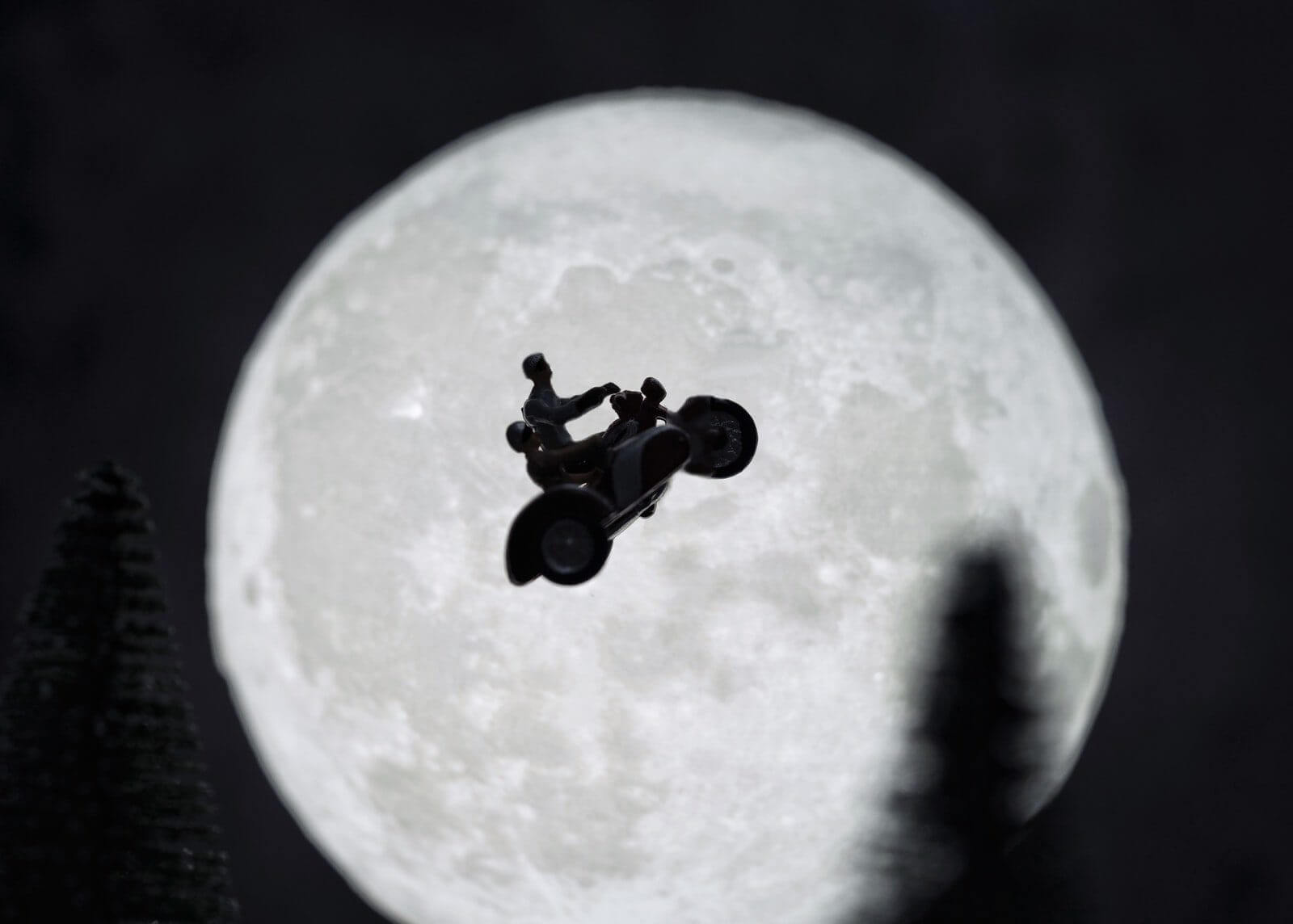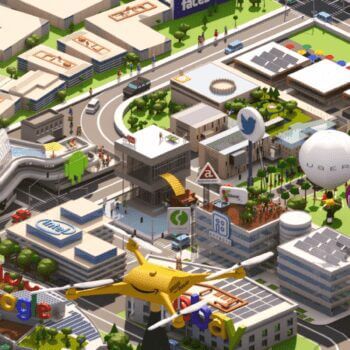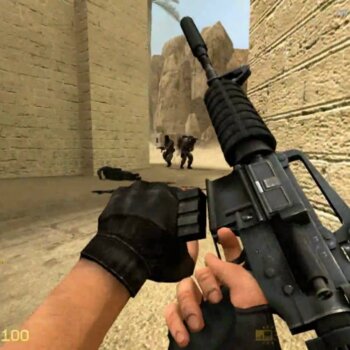In memory of Joe Armstrong, one of the inventors of the concurrent, functional programming language Erlang and a friendly disruptor.

Sun Tzu
There are different types of disruption and destruction.

Creative destruction tears down and clears away the existing so that a new eco-system can be built.
Creative disruption exposes flaws in the current setup to help inspire adaptations for sustainability.
Disruptive innovation creates a new area by providing different characteristics that unexpectedly displaces established products.
New market disruption occurs when a product fits a new or emerging area that is yet to be served.
Low-end disruption occurs when the rate at which products improve exceeds the rate at which customers can adopt the new characteristics. Therefore, at some point the characteristics overshoot the needs of certain stakeholders. At this point, a disruptive technology may provide worse characteristics than the existing technology yet exceed the needs of certain stakeholders, thereby gaining a foothold.
The technology that disrupts established eco-systems is usually only an incremental improvement. It has two important attributes:
- A new combination of characteristics that is yet to be valued by existing customers.
- The characteristics that existing customers do value improve at such a rapid rate that the new technology can later enter this area
Use variations of disruption based on landscape, climate and timing. Complement disruption with other forms of engagement.
Teach the organization disruption to secure the appropriate response and timing.
To deal with disruption, start anticipating: observe, look for latent desires, look at things in new ways, connect the disconnected and shift ideas into new contexts.
To deal with disruption, start acting: defend the core and disrupt the disruption by forgetting the core — embrace new setups and avoid being hamstrung by existing setups.
To succeed by completing a mission and avoid following through is wasted opportunity. Therefore, skilled leadership carefully develops strategy and deploys it effectively.
Avoid moving, except for advantage;
Avoid deploying, except for success;
Avoid engaging, except in crises.
Avoid developing strategy in anger;
avoid deploying strategy enraged.
if engaging is in line with purpose, move; if not, stop.
Anger can turn to happiness;
rage can turn to joy;
an organization destroyed is beyond re-recreation.
Therefore, skilled leadership is careful and cautious.
This is the way of keeping an organization in harmony and safety.
Boyd
From Destruction and Creation.
We find that the uncertainty and disorder generated by an inward-oriented system talking to itself can be offset by going outside and creating a new system. Simply stated, uncertainty and related disorder can be diminished by the direct artifice of creating a higher and broader, more general concept to represent reality.
Wardley
From Wardley Maps.
Peace, War and Wonder Let us consider the path by which something evolves. We first start with the appearance of this novel thing, its genesis. The component is highly uncertain, of potential future value and risky. We don’t know who will introduce it, whether it will go anywhere or what it will transform into. But, it’s a potential source of Wonder. It may well disappear into the bin of history along with refrigeration blankets or become a soaring success. We just don’t know. If it does find a use then supply and demand competition will start to cause its evolution. We will see custom built examples in other companies and eventually products introduced when the act becomes ubiquitous enough and well defined enough to support this.
The nature of competition will now shift to suppliers of products with constant feature improvement. It’s no longer about exploration of the uncharted space but about defining, refining and learning about the act. It’s about settling the space. This evolution will continue with constant release of ever more improved versions of the act — a better phone, a better television. It is a time of high margin, increasing understanding of customer needs, the introduction of rental services and relative competition i.e. a jostle for position between giant competitors. Disruptive change caused by new entrants will occur but such product vs product substitution is in the minority as most change is gradual and sustaining of those competing companies. Because of their success, inertia to change builds up within those giants whilst the activity itself continues to evolve becoming more widespread, better understood and declining in differential value. In the latter stages customers can even start to question whether they are getting a fair benefit for what they are paying but overall, this is a time of Peace in that industrial ecosystem. Whilst we cannot say who will win or when things will evolve from one version to another but we can say that evolution will continue if there is competition. We have a high predictability of “what” will happen with evolution … it will evolve from product to commodity!
The successful activity has now become ubiquitous and “well understood”. It is now suitable for more commodity or utility provision. Assuming that the concept and technology exists to achieve this then the likelihood of more industrialised forms increases. However, the existing giants have inertia to this change and so it is new entrants that are not encumbered by pre-existing business models that introduce the more commodity form. These new entrants may include former consumers who have gained enough experience to know that this activity should be provided in a different way along with the skills to do it. In this case of computing infrastructure, it was an online bookseller which heavily used computing.
This more commodity forms (especially utility services) are often dismissed by existing customers and suppliers of products who have their own inertia to change. Customers see it as lacking what they need and not fitting in with their norms of operating i.e. their existing practice. However, new customers appear and take advantage of the new benefits of high rates of agility, speed of genesis of new higher order activities and efficiency. Novel practices and norms of operating also co-evolve and start to spread.
Customers who were once dismissive start to trial out the services, pressure mounts for adoption due to the Red Queen. A trickle rapidly becomes a flood. Past giants who have been lulled into a sense of gradual change by the previous peaceful stage of competition see an exodus. Those same customers who were only recently telling these past giants that they wouldn’t adopt these services because it didn’t fit their needs and that they needed more tailored offerings have adapted to the new world. They are leaving the giants in droves. The old world of products and associated practices are literally crumbling away. The new entrants are rapidly becoming the new titans. The former giants have old models that are dying and little stake in this future world. There is little time left to act. The cost to build equivalent services at scale to compete against the new titans is rapidly becoming prohibitive. Many past giants now face disruption and failure. Unable to invest, they often seek to reduce costs in order to return profitability to the former levels they experienced in the peace stage of competition. Their decline accelerates. This stage of competition is where disruptive change exceeds sustaining, it has become a fight for survival and it is a time of War with many corporate casualties. This period of rapid change is know as a punctuated equilibrium.
The activity that is now provided by commodity components has enabled new higher order activities. Things that were once economically unfeasible now spread rapidly. Nuts and bolt beget machines. Electricity beget Television. These new activities are by definition novel and uncertain — “Ere be Dragons!”. Whilst they are a gamble and we can’t predict what will happen, they are also potential sources of future wealth. Capital rapidly flows into these new activities. An explosion of growth in new activities and new sources of data occurs. The rate of genesis appears breathtaking. For an average gas lamp lighter there is suddenly electric lights, radio, television, tele-typing, telephones, fridges and all manner of wondrous devices in a short time span. We are back in the stage of Wonder … The pattern of peace, war and wonder continues relentlessly. I’ve marked this onto the figure below.

Different Forms of Disruption
The three main forms of potential disruption that we will discuss are genesis, product to product substitution and product to utility business model substitution. The genesis of new acts are inherently unpredictable. If some novel activity appears that genuinely alters pre-existing value chains then there’s little you can do to predict this, you have to simply adapt.
When product to product substitution occurs due to some new capability or feature, then the predictability of when and what is low. The when depends upon individual actors actions and this is unknown. Equally, the addition of some new capability is also inherently unpredictable. Note, we know that things will evolve and the pathway for evolution (from genesis to commodity) but we don’t know nor can we predict the individual steps such as this product will beat that product. This means a new entrant can at any time create a disruptive product that will substitute an existing market but a company will have no way of ascertaining when that will occur or what it will be. Though this does happen, in the time of peace, the time of product giants then such changes are less frequent than the rampage of sustaining changes. There are exceptions and Apple’s iPhone disrupting the Blackberry is a good example of this type of disruption. I’ll note that Christensen quite famously dismissed the iPhone and has subsequently gone on to claim it’s not an example of it, in any case this sort of substitution is unpredictable. Equally hydraulic vs cable excavators would fall into this category. They are easy to analyse post event but next to impossible to determine pre- event. In these instances, Lepore seems to be on firm footing.
With product to utility substitution the what and when can be anticipated. We know we’re going to enter a state of war, an explosion of higher order systems, co-evolution of practice, disruption of past vendors stuck behind inertia barriers and so forth. Weak signals and the four conditions (suitability, technology, concept and attitude) can give us an idea of when it will happen. In any case, even without the weak signals, the transition to more industrialised forms is inevitable if competition exists. So, we can be prepared. A new entrant can more effectively target this change to disrupt others. However, it also means an existing player can effectively mount a defence having prior knowledge of the change and time to prepare. Fortunately for the new entrants, the incredibly low levels of situational awareness that exists in most industry combined with the inertia faced by incumbents in terms of existing business models, developed practices, technological debt, behavioural norms, financial incentives, Wall Street expectations and self interest are often insurmountable and hence the start-ups often wins when they shouldn’t. Whilst the change is entirely defendable against (with often many decades of prior warning) companies fail to do so. This form of disruption is entirely predictable and it is here where Christensen’s theory excels. The more industrialised forms are considered lower quality, not meeting the performance requirements and usually dismissed by the incumbents.
Hence let us follow the evolution of an act. We start in the figure below with the appearance of some new activity A[1]. It is found useful and starts to diffuse with custom built examples. As it evolves early products start to appear and we jump across one inertia barrier from custom built to products (point 1). Obviously those companies that have invested in their own custom solution argue that their solution is better but eventually pressure mounts and they adopt a product. The act continues to evolve with a constant stream of more “feature” complete products as we understand the space. Sometimes the progression is sustaining but sometimes a product appears that substitutes the previous examples. There’s inertia to the change (point 2) from customers and vendors invested in the existing product line. The thing is, we don’t really know if this new product line is going to be successful, any more than Apple new it could beat Blackberry or others. This form of disruption is unpredictable. Someone wins. The product giants continue to grow until eventually the act become suitable for industrialised provision. New entrants jump the barrier first (point 3) and this barrier is significant. That act has become established in many value chains and it is highly connected with its own practices. There’s a lot of dismissal of the industrialised version, claims it will take a long time but the punctuated equilibrium bites, the past vendors are struggling, practices have co-evolved and the old way is now legacy. Many past vendors start the death spiral in the hope of recapturing their glory days, their demise accelerates. This form of disruption was predictable but for most it wasn’t. Of course, the world has moved onto to inventing novel and new things built upon these industrialised components (point 4), new forms of organisation appear based upon those co-evolved practices. A next generation of future giants has arisen. Whether we notice them depends upon whether the cycle is localised at a micro economic scale to a specific industry or in other cases the component is so vastly connected it appears at a macro economic scale. In any case, the cycle continues. Ba da boom. Ba da bing.

Dealing with Disruption
The problem is there isn’t one form of disruption and hence there isn’t one way to deal with it. The techniques and methods you need to use vary. Unfortunately, if you don’t have a map of your landscape and you don’t understand the basic climatic patterns then you don’t have a great deal of chance in separating this. For most people, it’s all the same thing and they end up facing off against highly predictable disruption without any preparation or planning. In 2008, this was common in the computing industry. I’d end up with many arguments in boards pointing out the cloud computing (the shift from product to utility) was inevitable and not a question of “if” but “when” and that “when” was starting now. I’d explain the impacts and how they were going to be disrupted and people would retort with product examples, they’d start discussing the current situation with Apple vs Blackberry and how Blackberry could counter. These weren’t even remotely the same thing. Don’t mix the unpredictable world of product vs product substitution with the predictable world of product to utility substitution. In the figure below, I’ve provided three main types of disruption and the characteristics associated with each.

Opportunities
Opportunity on a map can be found in several places. From the genesis of the novel or the provision of unmet needs or differentiation of a product or the time of transition from one state (e.g. peace) to another (e.g. war) — see the figure below.

The maps won’t tell you what path you should take but they are a guide to help you discuss and decide.
Climatic Patterns for DisruptionThe economy has cycles. The economy demonstrates cycles such as the peace, war and wonder cycle. We start with the wonder of a new, uncommon and poorly understood thing. As we learn more then the applicable market grows and products are produced. New giants form and dominate a rather peaceful time of sustaining competition. There is some disruption (i.e. product to product substitution) and the competition is still fierce but the giants generally weather these storms. Then the act evolves to more industrialised forms, new entrants become the new titans, past giants tend to fall being stuck behind inertia barriers created from their own success. This is the time of war where competition becomes life threatening for those past giants. New industries built on the industrialised components form and a new state of wonder is born.
Change is not always linear. There can often be a perception that change is gradual because one instance of a component (e.g. a product) is replace by another in the same stage of evolution (i.e. a more feature complete product). This illusion of smooth and gradual lulls us into a false sense of security that all change is such.
Shifts from product to utility tend to exhibit a punctuated equilibrium. The shift across a boundary, e.g. from custom made to product or from product to commodity tend to visibly exhibit rapid exponential change and a shift from the past. This is known as a punctuated equilibrium.
Two different forms of disruption. There is more than one form of disruption such as the unpredictable product to product substitution and the more predictable product to utility substitution. The latter can be anticipated through weak signals.
A point of “war” causes organisations to evolve. The industrialisation of an act tend to cause co-evolution of practice and changes how organisations operate. If the component is significant this can lead to a new type of organisation.
About the Author
This article was written by Erik Schon, managing director at Erlang Solutions Ab. See more.





























